Matador Network's Blog, page 636
June 29, 2021
Here’s how you can win $10,000 worth of travel every year for 10 years

Trafalgar, the world’s leading and most awarded travel brand spanning all seven continents, is giving you the chance to win the travel jackpot. It’s giving one lucky person $10,000 worth of travel with Trafalgar Tours every year for 10 years.
This contest is a part of Trafalgar’s Ultimate Travel Event series. To enter the contest, you need to attend one of Trafalgar’s Virtual Events, where Trafalgar’s hosts from around the world take you on a tour of their home turf. You can visit an olive oil estate in Italy, learn how to make soda bread with an Irish chef, and attend a lecture on Hawaiian coffee with a local grower.
The contest is open to those in the US, Canada (excluding Quebec), Puerto Rico, Australia, New Zealand, the UK and the Republic of Ireland, Asia, and South Africa. Contestants have until 11:59 PM ET on September 30 to enter the contest.
The winner will be announced at 2:00 PM on October 14, 2021, and notified by email or phone within three business days. To RSVP for Trafalgar’s virtual event, you can visit the website. 
The post Here’s how you can win $10,000 worth of travel every year for 10 years appeared first on Matador Network.
9 great Killington Airbnbs for your adventure weekend in Vermont

We hope you love the spaces and stays we recommend! Just so you know, Matador may collect a small commission from the links on this page if you decide to book a stay. Listed prices are accurate as of the time of publication.
You don’t have to be a New Englander to participate in one of the region’s most time-honored traditions — the weekend adventure trip. New England has no shortage of mountain towns in which to have an epic weekend, but Killington, Vermont, tops the list for good reason: its nightlife, diverse restaurants, and large selection of Airbnbs that can accommodate all your friends. No matter the season, in summer for epic biking and hiking, or in the winter for skiing and riding, here are the Killington Airbnbs you should bookmark for when you want to take advantage of the beautiful Vermont outdoors.
1. Large Killington Center condo for six
Photo: Airbnb
This large one-bedroom condo combines the budget-friendly benefits of a cozy accommodation with the amenities of a luxury resort. With views of the Green Mountains and located right next to downtown’s dining and nightlife scenes, ski lifts, and trails, the condo also has access to a pool. The apartment accommodates six people, making it perfect for a couples getaway.
Six guests, one bedroom
Price: $158 per night

Photo: Airbnb
For a perfect weekend in the mountains, book this large Killington resort condo. This three-bedroom unit with a sunroof and balcony accommodates eight guests, and comes equipped with access to a gym, pool, basketball and tennis courts, and other amenities for when you’re not out in the mountains. It’s also just a few minutes from the heart of town and its restaurants and bars.
Eight guests, three bedrooms
Price: $211 per night

Photo: Airbnb
Located just off the Killington access road, this chalet is in an ideal spot for both nightlife and hitting the mountain. Accommodating eight guests in three bedrooms, this unique home has a spiral staircase and loft, great views in all directions, and most importantly, an outdoor patio with a grill and fire pit. Scratch that — the most important part of this house is definitely the out-the-door access to singletrack biking, resort and backcountry skiing, and hiking.
Eight guests, three bedrooms
Price: $200 per night

Photo: Airbnb
This home has enough space not only for your friends, but for everyone you meet on the chairlift, too. Accommodating 15 guests, this four-level house is ideal for large groups. There’s an outdoor hot tub, a balcony with picturesque views, a fireplace, and enough privacy so the neighbors probably won’t hear your music. It’s located in Pittsfield, 15-minutes from Killington itself, but with a pool table and enough space for 14 of your closest friends, who needs to go to the bar anyway?
Fifteen guests, three bedrooms
Price: $245 per night

Photo: Airbnb
This one’s not for the budget traveler. But if you want boutique-scale luxury surrounded by rugged wilderness, this is the place for you. Sleeping six, Atelier is located in the middle of a private wooded area, beside a pond, with footbridges and walking paths leading through the trees. The house is also within walking distance of the bars and restaurants. In a town where Ubers are tough to come by, that convenience is priceless.
Six guests, two bedrooms
Price: $693 per night

Photo: Airbnb
Condo complexes may lack the charm of a log cabin, but Killington’s condos tend to make up for it with unmatched convenience. The Whiffletree condos offer a shuttle service to the mountain and to some of the town’s most popular restaurants, so you don’t have to worry about wobbling home from the Wobbly Barn. This condo accommodates eight guests in three separate bedrooms.
Eight guests, three bedrooms
Price: $289 per night

Photo: Airbnb
This three-level house comes equipped with more than enough room to accommodate everyone on your outdoors adventure weekend. There’s three bedrooms, three full bathrooms, and an outdoor hot tub that fits five people. Perhaps more enticingly, there’s also a basement with a foosball table, ping pong, and a small gym. The house is just a few minutes’ drive from Killington Resort, K1 base, and all the bars, restaurants and breweries.
Eight guests, three bedrooms
Price: $349 per night

Photo: Airbnb
Lakewood Lodge combines the best of Killington’s attractions with the beauty of its natural surroundings. Located right on Kent Pond, this three-floor lodge is just 300 yards from the waterfront, where you can use kayaks, canoes, or paddleboards. There are also two hiking trails in the area, a waterfall across the pond, and the Deer Leap overlook with views of the surrounding wilderness. Since the lodge is just a few minutes from Killington Access Road, you’re also close to town and all the bars and lodges.
Eight guests, three bedrooms
Price: $500 per night

Photo: Airbnb
Sunrise Village is a ski-in, ski-out condo complex right on the mountain, making it an ideal location for the skiers in your group (in winter). For those who’d rather jet down the road to the bar, the center of town is just a 10-minute drive away. The condo complex is also perfect for meeting other people, given the close proximity of the units and the public pool and outdoor hot tub. It might not feel as enticing as the classic “cabin in the woods”-style accommodation, but these condos are modern, spacious enough to accommodate ten guests.
Ten guests, five bedrooms
Price: $591 per night 
The post 9 great Killington Airbnbs for your adventure weekend in Vermont appeared first on Matador Network.
7 easy hikes on Oahu, Hawaii, that are perfect for kids

Oahu has it all when it comes to family vacations, with sunny beaches, a modern city for all your needs, that wonderful Hawaiian vibe, and plenty of easy treks to take in the stunning scenery. Oahu is a paradise for hikers, and among all the trails are several that are perfect for children of all ages and family members with various physical abilities. From a slow trek to the well-known Kaiwa Ridge to easy strolls through the trees to Waimea or Manoa Falls, here are the best short, kid-friendly hikes on Oahu.
What you need to do before hiking with children in HawaiiMany water sources in Hawaii have leptospirosis, a sometimes serious bacterial infection that’s carried in animal urine. It’s important that your family knows not to drink any of the water or go swimming with any open cuts and sores. As always, be sun smart, wear bug spray, and carry plenty of water and snacks to keep everyone going on the trail.
1. Lanikai Pillbox hike (aka Ka’iwa Ridge Trail)
Photo: MH Anderson Photography/Shutterstock
Distance: 2 miles round trip
The Lanikai Pillbox hike is one of the most popular kid-friendly hikes on Oahu, with only a moderate incline that is absolutely worth it for the gorgeous views of the windward coast over Kailua and Lanikai beaches. It’s located only a few blocks from Lanikai Beach, which, with its turquoise water and powdery pale sand, is considered one of the most stunning coves on Oahu. Heading here with the kids after your family hike makes for a great day out.
Many people like to begin this trek in the dark to reach the summit at sunrise, but for families, this can be a little tricky as the first 100 yards or so is all hands on deck with a little scrambling and holding onto ropes. If you’re hiking with younger kids, it would be easier, and safer, to wait until sunrise for more light.
The “pillboxes” are the star attractions at the summit of this route, offering breathtaking views of Oahu’s coastline. Although referred to as the Lanikai Pillboxes, in technical military terms they aren’t really pillboxes. A pillbox is a defensive site — but these structures served only as observation stations and weren’t actually equipped with any defensive machinery. Either way, they are pretty awesome and, for kids, they offer an educational component to the hike.
The trailhead has no dedicated parking area, so if you have young children, parking can be an issue unless you start with the morning sun. The trail starts at Kaelepulu Drive and takes around one to two hours, depending on how slow you dawdle or linger to take in the views.
2. Diamond Head Hike
Photo: Jamison Logan/Shutterstock
Distance: 1.5 miles round trip
The 1.5-mile round-trip Diamond Head Trail is another of the popular kid-friendly hikes on Oahu. Children will particularly enjoy passing through the tunnel on the ascent and exploring the bunkers at the top, while all will likely appreciate the amazing views.
This hike is in no way stroller-friendly, and toddlers will most likely need to be carried at stages. However, it’s certainly achievable, and you’ll pass many other hikers with kids plodding determinedly up the well-maintained path. Views from the summit are iconic, overlooking Waikiki, Honolulu, and all the way to Ewa Beach and the Waianae Mountain Range. During winter, you may even spot passing humpback whales.
The best time to attempt the hike is at 6:00 AM when the trail opens. This will give you room to hike on a crowd-free trail and will ensure a parking spot. The route will take around two hours to complete. There’s an entrance fee of $5 for non-residents to do the hike (children under three are free) and a parking fee of $10 again for non-residents.
3. Waimea Falls
Photo: Chris Nunez/Shutterstock
Distance: 3.5 miles round trip
Located in Oahu’s North Shore area, Waimea Falls is one of the easiest kid-friendly hikes on the island and features a waterfall that you can swim at. It’s a particularly beautiful place for families to while away an afternoon. Don’t worry — the actual hike doesn’t take hours to complete, but admiring the botanical gardens and swimming at the falls can turn this into a day trip.
For families with younger kids, this is probably one of the better options on Oahu, as it’s mostly flat. You can pitch it to the kids as more of a walk than a hike, and soon enough you’ll have the whole family moving and enjoying the outdoors.
The route passes through world-class botanical gardens and historical sites before reaching the grand attraction, Waimea Falls. Waimea Falls cascades down 30 feet into a deep pond and while swimming is allowed, there are times it may be closed for safety reasons. It’s a requirement that you wear a lifejacket if you swim, which is provided by lifeguards and included in the admission fee to Waimea Valley.
There’s also a preserved Hawaiian village to explore, allowing you to sneak in some education. The admission fee is rather hefty but this kind of place doesn’t maintain itself and it’s stunning. The fee will make your wallet lighter by $20 per adult and $12 per child aged 4-12. There’s a discount for the military and residents of Hawaii.
4. Makapu’u Point Lighthouse Trail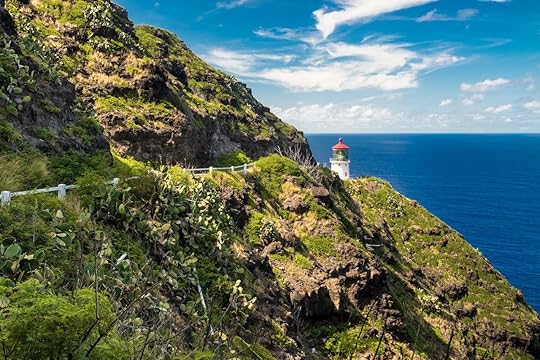
Photo: E.J.Johnson Photography/Shutterstock
Distance: 2.5 miles round trip
Any hiking route on Oahu that both includes a lighthouse and is stroller-friendly is a winner in any family’s book. The Makapu’u Point Lighthouse Trail is a gentle hike with spectacular views of Oahu’s southeast coastline, including Koko Crater and Koko Head. Once you do the hard yards and reach Makapu’u Head, the lighthouse comes into view. It was built in 1909 and features an Insta-worthy red roof. There are one-of-a-kind views across the Windward side of the island here, too. And, if you’re lucky enough to be hiking between November and May, don’t forget to pack binoculars, as it’s an excellent trail to spot migrating humpback whales.
Although the path is smooth and paved, it’s virtually entirely uphill and has an incline that will allow you to eat a cupcake guilt-free afterward. If you’ve been blessed with a wild child, you may need to hold their hand at various points because the trail drops off on the side at points and there are cacti in the low growing vegetation.
The car park and trailhead can be found off the Kalanianaole Highway at the south-easternmost point of Oahu and if you’re driving from the windward side of the island, the park will be on the left side of the highway.
5. Manoa Falls hike
Photo: segawa7/Shutterstock
Distance: 1.8 miles round trip
The highlight of this kid-friendly hike on Oahu is reaching the 150-foot-high waterfall to watch mother nature in all her cascading glory. The Manoa Falls hike is under two miles for a round trip through the rainforest to the waterfalls, but the falls aren’t the only great thing about it. The walk itself is stunning, featuring native Hawaiian plants and bamboo forests.
Although the trail is really easy to follow and is well-maintained, it’s not in the slightest bit stroller-friendly so be prepared for some baby- or toddler-wearing if you have little ones. This hike is nearly always muddy, but the last quarter can take it to extremes if there has been prior rainfall. Recent rain will make the waterfall even more memorable but it also brings out the mosquitoes, creates extra mud, and makes for slippery rocks. If it’s been raining, a smart move would be to leave a plastic bag in the car to dump muddy shoes into after the hike.
Parking is $5 if you park in the dedicated parking lot along Manoa Road, but some folks choose to find free residential parking just after Waakaua Street before reaching this parking lot.
6. Likeke Falls
Photo: MNStudio/Shutterstock
Distance: 1 miles round trip
There is nothing like a waterfall to keep kids interested when hiking in Oahu. In fact, any first-time visit to Hawaii should include chasing waterfalls. This one only takes around half a mile to reach the water, making for a quick, easily managed morning out during vacation. Likeke Falls is a beautiful hike that is fun for the whole family, but particularly for kids who like to get dirty as it’s muddy.
There are actually two ways to get to Likeke Falls: one is short and easier and the other is not as family-friendly. The easier route starts from the bottom of the Ko’olau Golf Club and takes around 15 minutes. The trailhead can be spotted from the parking lot and you will quickly come across a large tank covered in graffiti from which the trail leads off to the left.
7. Judd Trail
Photo: Steve Heap/Shutterstock
Distance: 1 mile loop
The Judd Trail is a popular kid-friendly hike on Oahu for younger children who love the outdoors — as this 1.5-mile loop can often turn into a complete mud bath. The payoff is Jackass Ginger Pool, a fun and safe swimming hole. Just note the depth can vary depending on recent rainfall. If it’s deep enough, visitors jump off the rocks but parents might want to encourage the kids to slide on the mossy rocks and into the water instead.
This hike actually begins with a shallow creek crossing, instantly putting a stop to any whining before it starts by beginning with a touch of soft adventure. Rock hop over as best you can and follow the loop through some fascinating greenery that, despite the short length of the trail, changes quite a bit.
To hike the Judd Trail, you’re going to need bug spray against the critter armies. It’s totally worth it though; just don’t forget it or you’ll spend the rest of the day scratching your arms and legs.
There’s no official parking lot for the Judd Trail, but hikers can drive onto Nuuanu Pali Drive and park along the street near two horizontal pillars that mark the trail’s entrance. 
The post 7 easy hikes on Oahu, Hawaii, that are perfect for kids appeared first on Matador Network.
Airline alcohol bans mean we may never achieve the perfect in-flight beverage

At 40,000 feet, even little plastic bottles of mid-shelf liquor feel like a treat. Yet just when it seemed like the era of in-flight craft and draught beers, quality wines, and artisan cocktails might finally be upon us, a new trend is threatening to disrupt the efforts airlines have made to revamp beverage services over the last decade: alcohol bans.
Boozing is a big part of the flying ritual for many travelers, from pre-flight cocktails to wine pairings with in-flight meals. First- and business-class passengers might expect to be greeted with a glass of bubbly on long-haul flights, while the promise of ordering a drink from the discomfort of an economy seat is one of the few remaining luxuries for the average traveler.
Airlines recognize the demand for better in-flight drinks. Several have partnered with alcohol brands to perfect their beverage services. Hawaiian Airlines serves a trio of tropical bottled cocktails crafted exclusively for the airline by On The Rocks Premium Cocktails. Scandinavian Airlines and Danish brewer Mikkeller have teamed up multiple times to create specialty beers designed to be enjoyed at altitude. The Dutch and Hong Kong flag carriers, KLM and Cathay Pacific, have also trialed partnerships with Heineken and Hong Kong Beer Co, respectively.
Many airlines have also invested in wine programs by enlisting the help of sommeliers and experts to craft refined wine menus. Master of Wine Jeannie Cho Lee, for example, is one of three consultants responsible for managing the wine service at Singapore Airlines, which also employs a crew of what the company calls “air sommeliers” to help passengers order the right wine mid-flight.
The success of these beverage programs has varied. Where Singapore Airlines has steadily evolved its wine service to reflect different routes and regional cuisines, Cathay Pacific’s Betsy pale ale, which was handcrafted to taste best at 35,000 feet, has had a start-and-stop run. These hiccups are understandable. Beyond practical considerations such as volume, storage, and supply chain, airline beverage programs have to contend with the ways in which flying impacts the way passengers actually experience their drinks.
“First is your physiological state at high altitude,” says Lee, which covers everything from being dehydrated, tired, and stressed to each individual’s physical condition. “Then there’s the air pressure, the cabin temperature, and the environment.”
As these factors do a number on the wine as well as your body, the end result is that “the wine’s structure, rather than the flavors, tend to be more prominent in the air.” Accordingly, the natural acidity of a white wine like Chablis is exaggerated while the tannins in red wines become harsher, pointing airlines toward more velvety, softer, rounder reds, Lee explains.
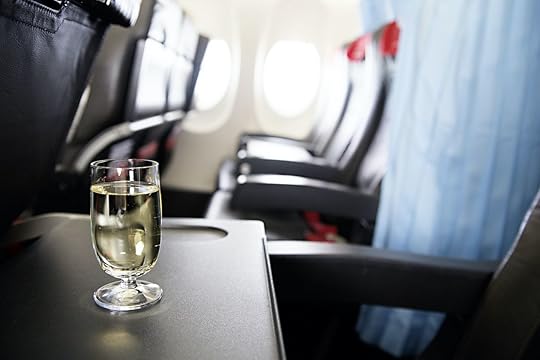
Photo: Yuliya Yesina/Shutterstock
Crafting in-flight drinking and dining programs that can stand up to flying fatigue and dulled taste buds is an uphill battle for airlines. A year of limited flights, and the cancellation of beverage programs on flights that were running, could make that battle even steeper. Unlike meal services, many of which have received Michelin-chef makeovers in recent years, alcoholic beverages are not essential fare — and they’re often linked to disruptive incidents onboard, a phenomenon that’s spiked this year.
Since the start of 2021, airline trends have shown two things: a surge of bookings following the pandemic-induced travel drought, and a spike in unruly passenger behavior, from objections to mask-wearing and social distancing to outright violence.
Following an altercation between a Southwest Airlines flight attendant and an inebriated passenger last month, which resulted in the flight attendant losing two teeth, the airline announced that it would be suspending its newly resumed alcohol sales. American Airlines quickly followed suit, deciding to ban mid-flight alcohol sales in its economy cabins until at least mid-September. This ban does not apply to first- or business-class travelers.
United, which had previously announced plans to resume its alcohol service on flights of 200 miles or more, has opted for a more vigilant reintroduction that begins with longer flights. At present, the airline plans to limit beer, wine, and hard seltzer offerings to domestic flights that exceed 800 miles and hub-to-hub flights.
Though the current airline alcohol bans are neither permanent nor ubiquitous, the idea has been gaining traction. Sara Nelson, the international president of the Association of Flight Attendants-CWA, has even advocated for federal intervention.
“The incidents of violence on planes is out of control, and alcohol is often a contributor,” she said in a statement earlier this month. “The federal government should provide guidance to airlines and airports on pausing alcohol sales for a period of time. We should do everything in our power to remove contributors to the problem.”
Others have questioned the bans, noting the fact that a majority of the incidents reported this year occurred when both food and beverage services were suspended due to the pandemic.
A lot remains to be seen about the future of post-pandemic flying. The future of quality in-flight drinking appears equally uncertain. At the very least, it’s safe to assume that the efforts airlines were starting to make to perfect the plane-ready beverage will be on hold indefinitely, much to the dismay of travelers who take pleasure in sipping drinks while cruising over the cloud line.
As for the possibility that we might be entering an era of in-flight prohibition, Lee said it best when asked to envision a world in which wine would no longer be served alongside meals on long-haul flights: “That would be a very sad day if that happens.” 
The post Airline alcohol bans mean we may never achieve the perfect in-flight beverage appeared first on Matador Network.
Japan program gives away homes
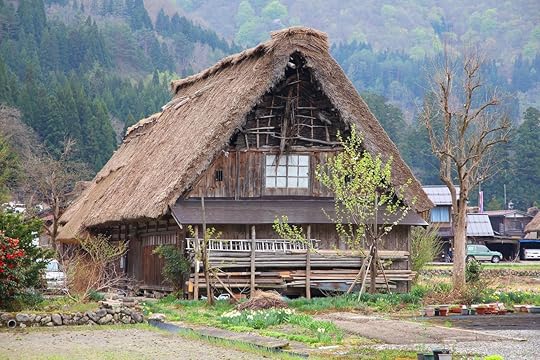
If you’re a prospective homebuyer who is struggling to gather up the money for a downpayment or to be approved for a mortgage, you may want to consider moving to Japan. To keep good homes from going to waste, Some towns and home-owners in Japan are trying to reduce the number of abandoned homes across the country by offering them up for free, or selling them for as low as $500. Perhaps surprisingly, there are tons of abandoned and empty houses on the outskirts of Japan’s major cities — eight million of them according to a 2018 government report, up 3.2 percent since 2013. The same report found that 13.6% of Japan’s homes were unoccupied, particularly in the prefectures of Wakayama, Tokushima, Kagoshima, and Kochi.
Japan’s aging population is partly responsible for the high number of abandoned houses in the country. There are few young people to purchase the homes of those who left them for retirement homes or who passed away. And the young people who are present take longer to have families for which they would need a home.
Many homeowners are simply left with no choice but to give the houses away for free, with some local governments offering subsidies to encourage potential new owners to renovate the properties. The provincial governments have set up akiya banks, databases of abandoned homes for sale, which are generally organized by region. Most of the listed homes are available for as little as $455 each, while others are being given for free. Some of the governments are even offering remote workers cash grants to stay in the countryside, according to Insider. In Okutama, the town distributes old and abandoned buildings to residents at no cost, and many new tenants have creatively repurposed them into restaurants, workshops, and other venues.
“The program not only helps the old owners, who were struggling to utilize the properties and pay taxes, but also for the town by reducing the number of abandoned buildings that could collapse or otherwise pose risks in the future,” a spokesperson for the Okutama government office told Nikkei.
Japan is also tapping into the remote work trend to boost its population of gainfully employed prospective tenants. Last year Nikkei reported that an incentive program was being introduced for remote workers employed in Tokyo to move to the countryside. Each worker would be given a grant of just over $9,000. 
A version of this article was previously published on November 16, 2018, and was updated on June 29, 2021, with more information.
More like thisCulture Guides5 things tourists do in Japan that drive the locals crazyThe post Japan is selling its abandoned homes for just $500 and offering cash to stay appeared first on Matador Network.
June 28, 2021
TikToker found mysterious underwater structures on Google Earth. Here’s what the place really is.

There is a lot of crazy stuff underwater. But when a TikTok user who goes by secrets.on.google.earth looked below the surface near the Florida Keys, they couldn’t believe what they saw — a strange field of rectangles laid out on the ocean floor, next to an even weirder collection of antenna-like formations with bizarre growths.
In a video, the TikToker zooms down to the ocean south of the Keys, and then seems to plunge underwater to reveal the bizarre structures.
Users speculated it might be a recreation of Atlantis, the home of Ariel and her mermaid family, a rock farm for aquarium decorations, an underwater graveyard, and many other odd possibilities.
@secrets.on.google.earthWhat is this place? 😳😨 ##googleearth ##googlemaps ##google ##hidden ##trending ##viral ##scary ##secretsongoogleearth ##secretsongoogleearth ##ocean
A few users, though, guessed correctly. It’s actually a nursery for new coral, and it’s how Florida is saving its coral reefs that have been damaged by pollution and climate change. Fragments of coral are placed on metal “coral trees” until they grow large and healthy enough to be returned to reefs.
The project is the work of the Coral Restoration Foundation, which ensures coral is genetically diverse and also able to withstand rising ocean temperatures. The nonprofit dedicated to saving coral reefs has already moved 130,000 endangered corals back to Florida’s reefs.
You can spend time volunteering there, as one TikToker said he’s done. It’s one of many initiatives that put Florida at the top of the list for sustainable wildlife tourism. Saving coral reefs and helping give back to the ocean in other ways is also one of the newest trends in scuba diving — one that we fully support. 
The post TikToker found mysterious underwater structures on Google Earth. Here’s what the place really is. appeared first on Matador Network.
14 beautiful Airbnbs in Mexico City ’s trendiest neighborhoods
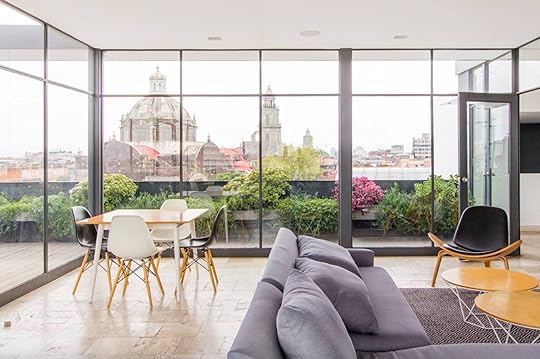
We hope you love the spaces and stays we recommend! Just so you know, Matador may collect a small commission from the links on this page if you decide to book a stay. Listed prices are accurate as of the time of publication.
Mexico City was founded on top of the ancient Aztec capital of Tenochitlán, which existed from 1325 to 1521. Part of its ruins — such as the Templo Mayor — are open to visitors, although many of them lay hidden underneath the streets you will walk on while discovering Centro Histórico, the historical center of the city. Nowadays, the city is so large that it extends way beyond Centro Histórico, with many neighborhoods with totally different vibe. To help you choose an area from which to work remotely or spend a few days on vacation, we’ve picked the best Mexico City Airbnbs in the most central areas of the city, and curated a list of interesting places to visit nearby. And, if you’re looking for the Mexico City adventure of your dreams without doing any of the organizing, Matador Network has the perfect trip waiting for you.
Juárez, Cuauhtémoc, Centro Histórico (Downtown)1. Stylish, centrally-located two-bedroom apartment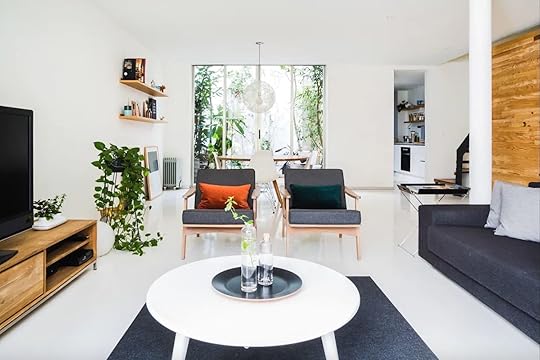
Photo: Airbnb
This beautiful space on Col. Cuauhtémoc is near Rokai, one of the best ramen spots in town. An impeccable place, this unit is fully equipped and comfortably fits four people. There is also an outdoor terrace (hammock included) perfect for yoga, training, or relaxing. You’ll be five blocks from the main avenue, Paseo de la Reforma, from which you can easily reach the Bosque de Chapultepec or any point in downtown CDMX. For a great breakfast, visit Niddo and in the afternoon, Salón Ríos is a classic cantina that serves Mexican antojitos followed by mezcal or tequila. If you feel like taking a walk within a 20-minute range you can visit the Museo e Antropología, the Museo de Arte Moderno, and the Tamayo Museum.
Four guests, two bedrooms
Price: $135 per night

Photo: GeorgeColePhotoAirbnb
Close to the popular Blom Café is this minimalist and well-lit studio apartment. A good example of the minimalist style common with Mexico City Airbnbs, this spot is perfect for those who travel alone or as a couple and who need a space to rest or a place from which to work, with the independence of having a kitchen and washing machine. In front of Roma Norte, this chic apartment is close to the historic center of Mexico City. You can have breakfast at Havre 77 or Café Nin, eat at Loose Blues or Masala & Maíz, indulge in a dessert at Joe Gelato, or enjoy a coffee or a cold beer at Cicatriz.
Three guests, studio
Price: $60 per night

Photo: Airbnb
This small but modern apartment is located in the heart of Centro Histórico (Downtown), within walking distance from the Cathedral, the Templo Mayor, the Plaza de Santo Domingo (including the famed street quesadillas on its corner), and the Palacio de Bellas Artes. You can’t miss eating at El Cardenal or Café de Tacuba, checking out the murals of the Palacio Nacional (you have to bring an original ID or they will not let you in), and walking the Alameda de Bellas Artes after visiting its Palacio until you reach Barrio Alameda. If you’re in the mood for live jazz, the Zinco Jazz Club — just up the road from the apartment — is your spot.
Four guests, one bedroom
Price: $68 per night
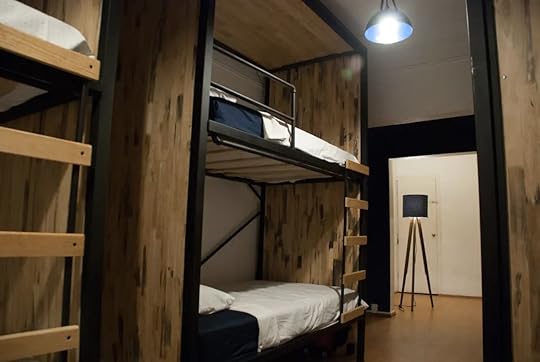
Photo: Airbnb
On the border with Roma Norte, this unit is located on Avenida Chapultepec in what’s known as the Wanderlust District. With easy downtown access, there are many rooms for different capacities, perfect for groups of travelers seeking to maximize their budget. This room for six people has three double bunk beds, includes breakfast, and has a shared roof garden where you can hang out or work. Next to it, you have metro and metro bus stations. The spot is within walking distance from Mercado Juárez, a true neighborhood market with its options of traditional food and local fruits, vegetables, cheeses, and meats. You can also walk to the Jardín Juárez to have a beer in the open air, go for a pizza at Dr. Pizza, and listen to live music at Parker & Lennox.
Six guests, one bedroom
Price: $59 per night
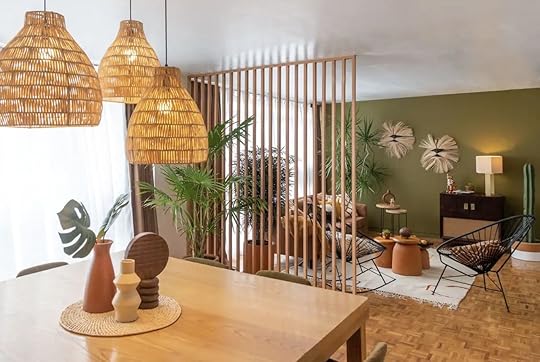
Photo: Airbnb
This bright and well-trimmed space has four very comfortable rooms that can receive up to 10 people. Casa Tierra is full of Mexican contemporary design pieces by M.A. and Cacao and is located on the busy Av. Álvaro Obregón, two blocks from Calle Colima. Here you will find several of the most interesting design stores in the city (look for your gifts inside the aptly named Happening Store), surrounded by many restaurants such as the classic MOG, Belmondo, the delicious tacos at Taquería Orinoco and the drinks of Páramo and El Parnita. If you are a vinyl lover, Revancha and La Roma Records are nearby.
Ten guests, four bedrooms
Price: $152 per night
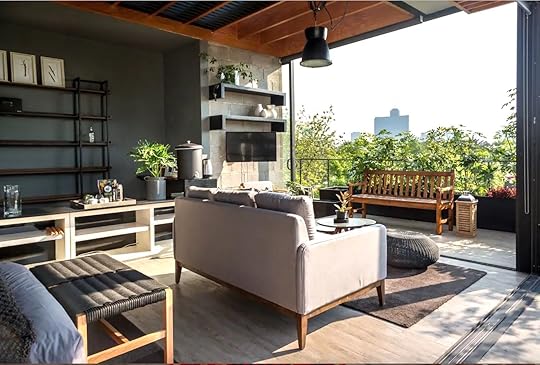
Photo: Airbnb
This small but perfect loft, surrounded by greenery and opening onto the whole of Condesa from its living room, is ideal for one or two people. You can even open its windows to enjoy the sunrise and sunset from bed. With a spacious bathroom that includes a washing machine,it’s the ideal place for a long stay. It is very close to Avenida Alfonso Reyes and its delicious breakfast options, including Casa Bruna, Quesería de mí, and Peltre. You’ll have one of the best cafes in the neighborhood in Chiquitito and some good literature at El Péndulo Bookstore or the Fondo de Cultura Económica. You can get to Parque México easily and get to know the newest tortillería from the Mexican chef Enrique Olvera, Molino “El Pujol.”
Two guests, one bedroom
Price: $120 per night
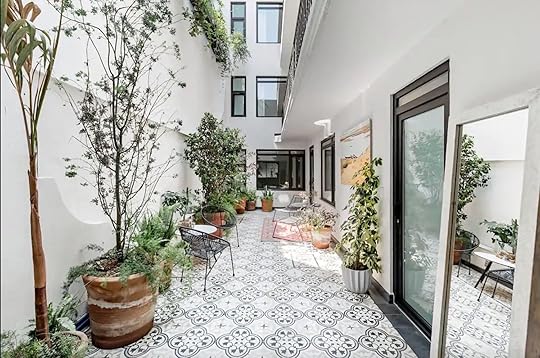
Photo: Airbnb
With a private outdoor area and a shared rooftop, this recently remodeled space in an old Art Deco house has all the comforts to spend a short or long period in Mexico City. Close to the subway and easy to travel around by bicycle, it’s very close to the Bosque de Chapultepec, where you can run in the mornings, go sightseeing while you get to know its castle or go through it to reach the main museums on Av. Paseo de la Reforma. The delicious cuisine of Lardo, by chef Elena Reygadas, is right up the street, as well as the mythical Nevería Roxy on the beautiful and very green Avenida Mazatlán.
Two guests, one bedroom
Price: $68 per night

Photo: Airbnb
This fully equipped apartment is ideal for those traveling with children, with high-speed internet and a supermarket next door. The well-known Don Juan Tacos is two doors away, famous for having appeared in the movie Amores Perros but around here, their notoriety is only tacos-related. Nearby you have the Parque España and there are a ton of gastronomic and shopping options.
Six guests, three bedrooms
Price: $191 per night
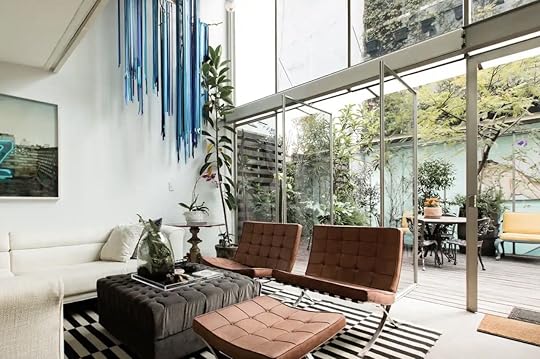
Photo: Airbnb
With a private terrace and enough space to feel at home, this loft with eclectic decoration can accommodate up to four people with all the comforts. Very close to a metro station and a few minutes’ walk from the Museo de Antropología and important galleries such as Kurimanzutto, you will be on the border of Condesa and the San Miguel Chapultepec neighborhood. This residential area is home to the best baguettes this side of the city at Deli Lou. It is also a good base camp to move within the city, or to get away from it all and stay at home working or resting.
Four guests, two bedrooms
Price: $238 per night
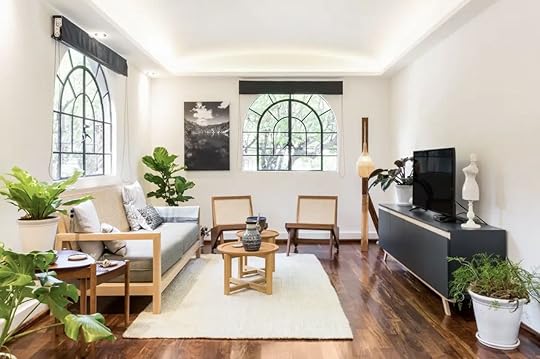
Photo: Airbnb
Inside an old California-style house, this completely independent space with a mix of traditional and contemporary decor envelops you in a modern and comfortable version of Mexico. You will find several of the house’s design pieces in the new Casa Ikal Condesa, a few blocks away, where you can buy the works of some of the best Mexican brands such as Ayres. That way, you’ll return home with gifts that remind you not only of your time in Mexico but of the space in which you stayed.
Two guests, one bedroom
Price: $174 per night
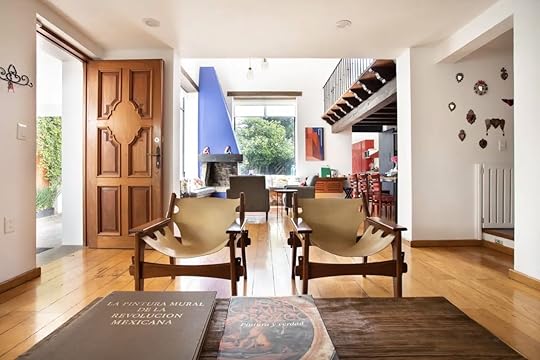
Photo: Airbnb
This house with a private terrace and a shared garden was the first study of the famous muralist José Clemente Orozco. It is now managed by his granddaughters. He designed and built it between 1921 and 1923 with three bedrooms with private bathrooms. The house can comfortably welcome up to eight people. It is located in Coyoacán, one of the best neighborhoods to experience Mexico City beyond its central, tourist-heavy areas. If you choose it and you like art, don’t miss the Dolores Olmedo Museum, the Anahuacalli Museum, and the Diego and Frida House Studio Museum.
Eight guests, three bedrooms
Price: $116 per night
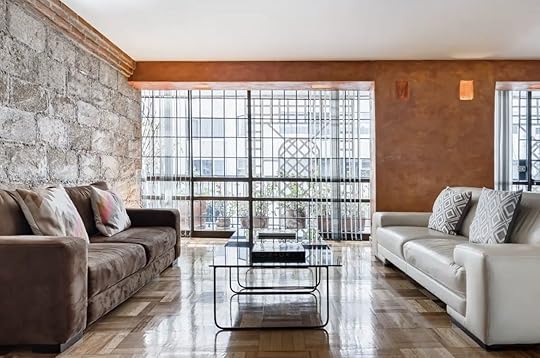
Photo: Airbnb
The upscale, business-centric area of Polanco is home to the Jumex and Soumaya Museum, the Inbursa Aquarium, many design shops, and the famous Pujol restaurant (book in advance). This apartment puts you close to it all, and it can accommodate up to seven people. With 24-hour security and on a very quiet street, you’re in a safe quarter in this apartment. You will be well connected to the rest of the city if you use private transport. Though, it’s just two blocks to the famous Presidente Masaryk street with some of the city’s luxury boutiques, a few blocks from the Parque Lincoln and a 25-minute walk from the Museo de Antropología.
Seven guests, two bedrooms
Price: $255 per night
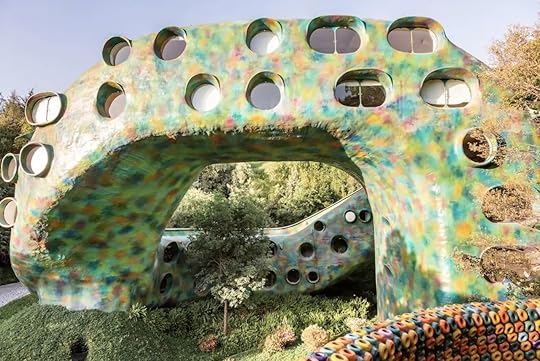
Photo: Airbnb
Ideal for a group trip, this massive complex has five rooms in a building shaped like a snake. It is without a doubt the most unique of Mexico City’s Airbnbs and can accommodate up to six people. It was designed by the Mexican architect Javier Senosiain in 2008 and is a key example of the so-called organic architecture. It is on the outskirts of Mexico City, so plan to enjoy the nature of its gardens and stay in during your visit. Nearby is the Basilica de Los Remedios, one of the oldest in Latin America, with a traditional food market neaby. 
Six guests, five bedrooms
Price: $306 per night 
The post 14 beautiful Airbnbs in Mexico City ’s trendiest neighborhoods appeared first on Matador Network.
Gordon Ramsay’s attempt to make Puerto Rican pegao sparks debate over authenticity

Gordon Ramsay isn’t known for his sensitivity — in fact, quite the opposite: He’s built a reputation on insulting amateur home cooks and berating professional chefs. Usually, audiences find that abrasive side of his personality refreshing (or least entertaining) as he cooks dishes from around the world. Yet even when he’s agreeable, his cooking can rub people the wrong way. Most recently, Ramsay is facing criticism after he attempted to prepare pegao, a Puerto Rican fried rice dish.
In a recent video posted to the chef’s YouTube channel titled “Can Gordon Ramsay Make a Puerto Rican Crispy Rice Dish?” Ramsay greets viewers from Puerto Rico, which he calls one of the most “incredible islands I’ve had a chance to visit.” He says the dish is a “staple,” and “nothing fancy,” but his tone isn’t dismissive or condescending. He clearly admires the dish and is excited about recreating it.
Still, some chefs took issue with Ramsay’s approach to pegao. On Twitter, a Puerto Rican chef named Reina, who goes by @thesofritoproject, wrote, “This isn’t pegao,” and pointed out that, “It’s just frustrating to see white male chefs get applauded for doing the bare minimum (and incorrectly, for that matter) about cuisines they know nothing about and then get heralded as experts.”
Though Ramsay’s final dish certainly looks appetizing, the video found many detractors who agreed with Reina’s objections to his version of pegao. One user pointed out that pegao refers to a very specific type of rice, tweeting, “Don’t get me wrong, this looks great and all. But what we typically refer to as ‘pegao’ refers to the rice that sticks to the bottom of the pan while cooking, which gets all crispy and sticky.”
Another person on Twitter was a bit more blunt in his opinion of the dish: “This is it not what you’re saying it is. – Every Puerto Rican that has ever existed.”
It’s not the first time Ramsay has found himself in hot water regarding recipes from cultures other than his own. Back in 2019, his London restaurant Lucky was at the center of a debate over cultural appropriation, with critics claiming that the menu treated pan-Asian cuisine as a monolith with interchangeable dishes.
There were some people who were more receptive to Ramsay’s interpretation of pegao, however. On Youtube, a commenter wrote, “The Puerto Rican delegation has accepted Gordon’s Ramsey’s application for Boricua citizenship.”
Reina isn’t alone in commenting that white male celebrity chefs often get praised for popularizing cuisines that have been cooked by historically underrepresented people for generations. It’s an idea that’s widespread within the food and restaurant world — and it’s one that many chefs are just starting to grapple with. It’s always worth questioning how some chefs market and take credit for dishes outside their own culture.
While Ramsay’s intentions might have been to celebrate and honor Puerto Rican flavors, the issue many of his critics have is that he chose to call his dish pegao. That dish has a very specific definition, and he chose to reinterpret pegao in favor of his own culinary whims. It seems that he simply got his facts wrong: In a Twitter thread, Seattle-based chef Eric Rivera wrote that “you wouldn’t use a cast-iron pan” to make pegao. “You would use a caldero made of aluminum if it is a classic preparation. Adding butter wouldn’t be a thing,” he added.
He boils down the problem with Ramsay’s attempt to cook pegao by writing that, “You’re showing people the wrong name of the dish, the wrong technique.” The solution Rivera suggests instead is to next time, “Get a Puerto Rican person to get on camera and sit back, let them do the talking, and cooking. Learn, cook it many times, then think about a video with the original Puerto Rican to show your progress.”
There isn’t necessarily anything inherently wrong with adapting dishes from other cultures to a chef’s specific tastes. But when white chefs call their interpretation of a marginalized culture’s dish by the wrong name, it’s easy to see why plenty of people would feel like that’s erasure of their own beloved culture and traditions. 
The post Gordon Ramsay’s attempt to make Puerto Rican pegao sparks debate over authenticity appeared first on Matador Network.
New animation shows what exactly is inside the Statue of Liberty

People around the world are familiar with what the outside of the Statue of Liberty looks like with her light green color, crown, tablet with the date of the Declaration of Independence, and torch. The inside, however, is lesser known. A new video from animator Jared Owen gives a look at what holds Lady Liberty upright for all who enter the New York Harbor.
Turns out that just like the human body, Lady Liberty needs a skeleton. The statue was constructed using a method called repoussé. To make it, the outside pieces of copper — about the thickness of two pennies — were hammered into shape using a wooden mold. Then, iron straps were put on the inside for support. This was done piece by piece, but that alone couldn’t hold up the 151-feet-tall statue. A support structure made by Gustave Eiffel (yes, the one responsible for the Eiffel Tower built a few years later) uses a central iron pylon with smaller support beams. This allows it to sway up to 4.7 inches without being damaged or toppling over, thus enabling the statue to hold for the long run.
The final statue with the internal supports was broken into more than 350 pieces to be moved from France to the US — and it took four months to be reassembled on what was then known as Bedloe’s Island (now it’s Liberty Island). The careful construction worked, though the torch had to be replaced in 1986 because of water damage. Today, the copper flame is covered with 24-karat gold, while the original is on view in the monument lobby on Liberty Island.
It’s possible to see parts of the Statue of Liberty’s skeleton for yourself. The crown of the statue is open by reservation only, and on the way up you can see the internal supports. What you can’t see is the full inside. The torch was open in the past, but tours stopped after the “Black Tom” explosion on July 30, 1916. National Park Service staff are the only ones who can see it today, and get there via a 40-foot ladder. For a look at the rest of the interior, you’ll have to rely on animations. 
The post New animation shows what exactly is inside the Statue of Liberty appeared first on Matador Network.
6 beautiful urban trails that prove Washington State was made for hiking
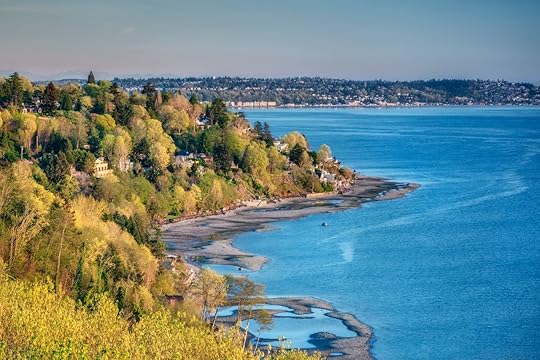
Lush forests, glacier-clad Cascade Mountain peaks, and saltwater shorelines are hallmarks of Washington State. Thankfully, you don’t need to travel far to enjoy these natural wonders. Anyone can experience the Evergreen State’s abundant beauty via urban trails that include everything from city center waterfront walks to true mountain treks.
Located in or near the city, urban trails are defined by ease of access. Most are family and dog-friendly, with trailhead amenities and year-round hikeability. As with any hike, it’s a good idea to fuel up properly, bring plenty of water and snacks, and come with the right gear. But rest assured — you’ll never be far from the city on these adventures in the nearby nature.
Here are six diverse urban trails spread across the state. Mileage ranges are given, but since most of these trail networks are extensive, your mileage may vary.
1. Riverfront Park in Spokane1-2 miles round trip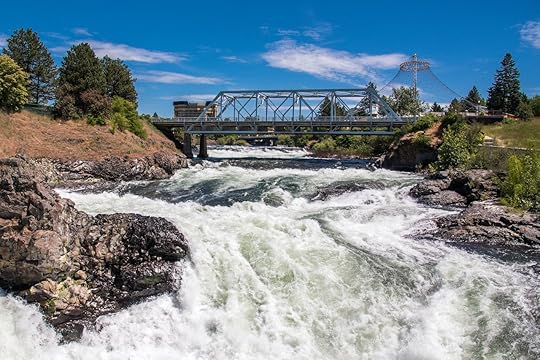
Photo: Krumpelman Photography/Shutterstock
Located near the Idaho border, Spokane is Washington’s second-largest city. It’s a city that embraces its natural surroundings, and Riverfront Park is among the prettiest city parks in the state. Suspension bridges span the Spokane River, where waterfalls thunder through the canyon below. The Spokane SkyRide aerial cable cars fly over the falls in slow motion. Elsewhere in the park, human-made attractions like the historic clock tower, pavilion, and a giant red wagon make this urban greenspace one of Spokane’s top destinations. And it’s all accessible via urban pathways in the center of the city.
Looping through the park can take an hour or an afternoon, depending on your preferences. First, grab a park map at the visitor center. For the best views of Spokane Falls, cross the river via suspension bridge to Snxw Meneɂ island (this Salish name means “salmon people”). Back on the main island, you can’t miss the Expo ‘74 Pavilion — a former IMAX theater built for the World’s Fair that’s been converted into an elevated walkway and river viewing platform. Catch the sunset from here if you can. Then stroll through the peaceful park to the Great Northern Clock Tower. A remnant from Spokane’s industrial railway past, the tower has stood the test of time since 1902.
2. Saddle Rock Trail in Wenatchee3 miles round trip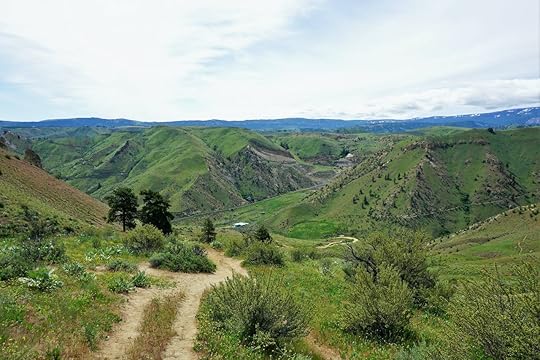
Photo: Trish Jose/Shutterstock
If you’re looking for more “hike” and less “urban,” Saddle Rock is the answer. The prominent rock is visible from Wenatchee — a picturesque town on the other side of the Cascades mountains from Seattle — that rises nearly 2,000 feet above the valley. It’s a short, steep trek that gains 900 feet in a little over one mile, so come prepared for a proper hike. The summit offers sweeping views of the Columbia River.
Saddle Rock is perhaps best hiked in the spring during balsamroot blooms. During summer, hike in the early morning or evening to beat the heat. Regardless of the season, pack plenty of water, as the trail is fully exposed to the elements.
From the trailhead, which is located 10 minutes from downtown Wenatchee, head up a wide gravel path toward the looming summit. Social trails branch off here and there. When in doubt, stick to the widest, most well-traveled path. Soon, you’ll find yourself between two peaks atop the saddle, staring down on the city and river below. Keep a close eye on kids and dogs up here — it’s a long way down.
3. Dune Peninsula in Tacoma2-3 miles round trip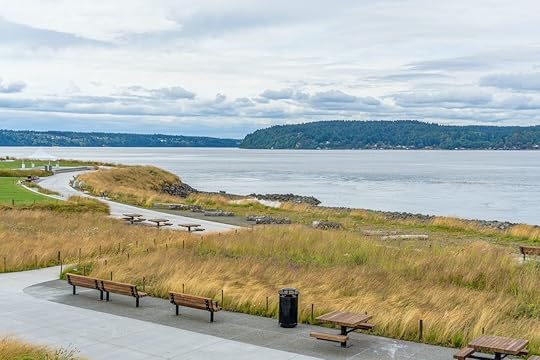
Photo: GeorgeColePhoto/Shutterstock
Just south of Seattle on Puget Sound, Tacoma has become a destination of its own, and its redeveloped waterfront combines urban convenience with the natural landscape. In just a couple miles of walking, you can go from the trendy shops at Point Ruston to 760 acres of forest, botanical gardens, zoo, and aquarium at Point Defiance Park. Peer over Puget Sound, watching ferries from various vantage points along the way.
Begin from Dune Peninsula Park to fully explore the area. Named after the classic sci-fi novel Dune, written by former Tacoma resident Frank Herbert, this little park offers 11 acres of scenic saltwater shoreline. See if you can find the sandworm public art inspired by the book. The trail bends south around the marina, turning west to ascend a wide pedestrian ramp that leads to the Wilson Way Bridge. This 605-foot-long, 50-foot-tall structure provides wide-open views of Puget Sound with the nearby islands and ferries below. Plus, it has a giant slide.
The “stairs and slides” attraction (locally known as chutes and ladders) is a series of six slides dropping 50 feet from Wilson Way to the waterfront. No child (and few adults) can resist the urge to slide on down. From here, the trail continues across the bridge into Point Defiance Park. Miles of hiking trails await at this crown jewel of Tacoma Metro Parks’ public lands. If you’re visiting during summer, don’t miss the free botanical gardens.
4. Spruce Railroad Trail in Port Angeles2-10 miles round trip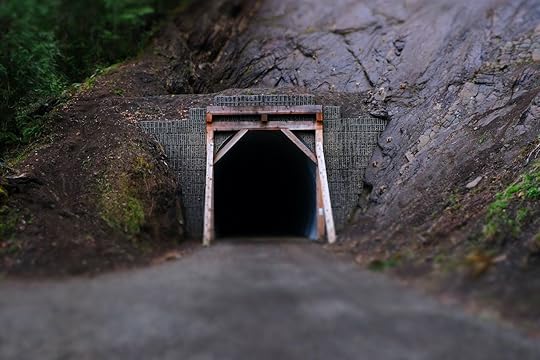
Photo: Sara Valenti/Shutterstock
Maybe it’s a stretch to call this forested trail in Olympic National Park “urban.” But it’s only 30 minutes from Port Angeles, a striking coastal town at the foot of the Olympic Mountains, and the entire trail is paved, making it easily accessible to all. This trail runs five miles one-way along the lakeshore, but its highlights can be reached in a round trip that’s just two miles.
Spruce Railroad Trail is a remarkable section of the 135-mile Olympic Discovery Trail. Tracing the north shore of Lake Crescent, the trail follows an old railroad grade and passes through decommissioned train tunnels at the foot of Pyramid Mountain. This rails-to-trails corridor was built to harvest the trail’s namesake Sitka spruce in 1918. These days, it’s a pleasant walk past mossy maple trees and sword fern to a swimming hole on the wild side of the lake.
After just one mile of hiking, you reach the 450-foot-long McFee Tunnel. Walk through to the other side, hang a left, and discover the trail’s main attraction: Devil’s Punchbowl. Most visitors call it a day here, and it’s easy to see why. With its picturesque footbridge spanning the lake and Olympic Mountain views, the punchbowl makes for an excellent summer swimming hole. Just don’t wade out too far. At 624 feet deep, Lake Crescent is Washington’s second-deepest lake.
5. Deception Pass Headlands in Anacortes3-4 miles round trip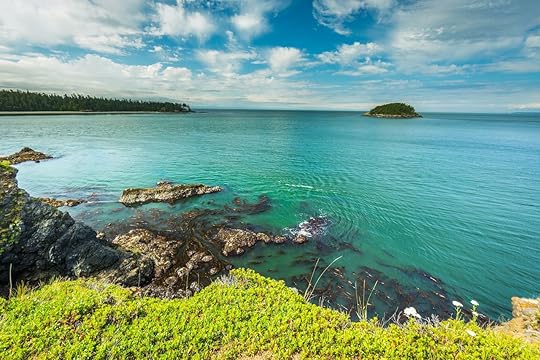
Photo: Roman Khomlyak/Shutterstock
The iconic Deception Pass bridge connecting Fidalgo Island and Whidbey Island stands 180 feet over the swirling waters below — a striking symbol of urbanity surrounded by natural beauty. Welcome to Washington’s most-visited state park. You can walk across the bridge for unrivaled views from the Cascade Mountains to the San Juan Islands. Besides the bridge, tourists come for the evergreen forests, pebble-strewn beaches, and headland heights — no ferry required. Get a taste of it all with a hike at Deception Pass Headlands.
Setting out from Bowman Bay, the trail heads south past an old fishing pier. Climb a 50-foot bluff (or simply walk the beach at low tide) to access Lighthouse and Lottie Points. These small peninsulas both offer short loops with views of the Deception Pass Bridge. Choose Lighthouse Point for a longer trek with high bluffs; Lottie for a shorter excursion.
Backtrack to Bowman Bay in preparation for the grand finale. Following the main trail north, then west leads to Rosario Head. The 60-foot sea cliffs here are arguably the most photogenic place in the park. Not quite Ireland’s Cliffs of Moher — but the closest you’re going to get in northwest Washington. Watch kids and dogs closely around these otherworldly bluffs.
6. Discovery Park in Seattle3-4 miles round trip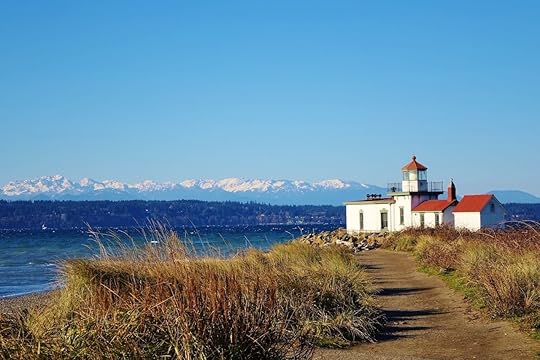
Photo: Dan Lewis/Shutterstock
No Washington urban hikes guide is complete without mentioning our favorite park in Seattle: Discovery Park. Visitors can get lost in these 534 acres of forest, meadow, beach, and bluff — all connected by miles of trails. Grab a trail map from the East Parking Lot visitor center to plot your route before hopping on the 2.8-mile loop trail.
Loop highlights include bluff-top views across Puget Sound to the Olympic Mountains and a former military base at Fort Lawton Historic Area. But Discovery Park’s finest feature is located off the main loop, and accessible only by walking. At the west end of the loop trail, take a shore excursion along the South Beach Trail — dropping 200 feet to the waterfront. Here stands West Point Lighthouse. Originally constructed in 1881, the historic lighthouse is still active today.
Visit during sunset for the most dramatic photo opportunities. When the weather is clear, Mount Rainier rises above Seattle’s southern skyline, bathed in alpenglow at nightfall. This scene is as Seattle as it gets. With saltwater at your feet, historic lighthouse by your side, and volcano views beyond, Discovery Park proves itself a world-class urban hiking destination. 
The post 6 beautiful urban trails that prove Washington State was made for hiking appeared first on Matador Network.
Matador Network's Blog
- Matador Network's profile
- 6 followers



